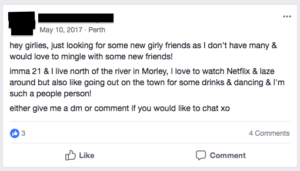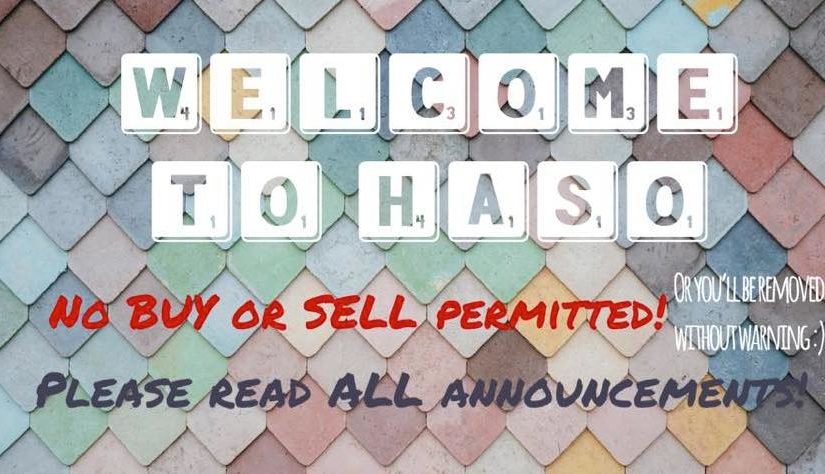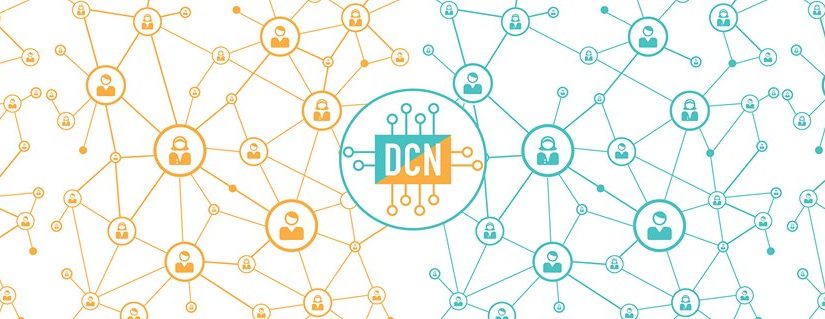Mia Lindsay
Abstract
This paper examines the Facebook page Help a Sister Out, as an example of an online community and third place. It was created in 2015 as a page for women in Perth to ask for advice and seek connections with other women on the page. By observing it as a Web 2.0 third place, it can be seen that Help a Sister Out has certain features that facilitate positive communication and connections between members. This article highlights these features, how they fit within the third place criteria and the way this creates a safe and comfortable environment for it’s members.
Introduction
The creation of online communities in Web 2.0 has broadened the idea of an active ‘third place’, initiating a movement that has seen people from across the world join together to share common interests or ideas. Aldosemani, et al (2015) defines community as “a psychological condition of feeling close to groups of individuals who share membership, influence, common needs and emotional connection” (p.1020). Help A Sister Out in Perth! (No Boys Allowed), a Facebook group created by Ninya Lishus in 2015, allows exactly this. The page provides a forum that women in Perth can join to ask questions to other members, about anything from personal advice, to restaurant or hotel recommendations, to help using Photoshop, and so on. In the 3 years since its creation, the community has grown to over 32,000 members and has 8 active administrators. The page has in many ways become an active ‘third place’, defined by Oldenburg (1989) as neutral locations where users can voluntarily enter and participate that are outside of home, known as first place, and work, known as second place. Initially this meant cafes, restaurants, parks or clubs, but the generation of Web 2.0 has allowed online forums and communities such as Help A Sister Out, to become a kind of third place. The way friendships between strangers are formed, how help and advice is sought through weak ties in the network and the way the administrative services and guidelines of the page limit negative issues are all ways in which this community facilitates positive communication and connections in a Web 2.0 third place. While there are some dangers in taking unsolicited and often uneducated advice from strangers, particularly regarding medical or financial advice, overall the effect of Help a Sister Out as a third place appears to be a positive one.
Creating and maintaining friendships
“Today we are seeing the advent of social networks formed in cyberspace. People meet in online forums and through online dating services; they keep in touch with an unprecedentedly large number of people via electronic media” (Donath & Boyd, 2004, p.1). The online third place is an important sphere in which established friendships could be maintained and strengthened, and new friendships and relationships can blossom. Baker-Eveleth emphasises how “The places become a home away from home. The third place is a comfortable arena to revisit and interact with friends” (2003, p.17). Help a Sister Out creates a comfortable and inviting third place where members are encouraged to freely ask for and give advice to and from other members. It aims to be a no judgement space where people can connect and seek support without the stresses of home or work. The aim of the community is women helping and building up other women.

In terms of creating new friendships online, Oldenburg states, “Not even to its inhabitants is the third place a particularly intriguing or exciting locale. It is simply there, providing opportunities for experiences and relationships that are otherwise unavailable”. While many question the validity of friendships formed and maintained online, which will be discussed further in later paragraphs, there are many examples of how people are welcomed and common interests are shared on the page. This can lead to online friendships being born, and those online friendships can later become real life friendships.
A friendly environment in which regular visitors encourage quieter non-regulars to participate in conversation is a defining factor in a successful third place (Baker-Eveleth, 2003, p.16). Regular members on Help a Sister Out make the page seem much more like a community than just a forum that people join, and the friendliness of those members are vital to making a friendly environment that new members want to return to.
“Users may browse members’ profiles and statuses, view photo albums, follow links to recommended, and so forth. Exploration helps physically distant users discover similarities and establish social connections, repurposing their usage to meet individual needs”. Aldosemani, et al (2015) highlights how members can utilise the features of the page to their own social advantage, using it to make connections and forge friendships.
By definition, Web 2.0 enables social interaction through networking platforms such as email, chat room or social media forums (Murugesan, 2010). The growth of these networking platforms has reversed the original friendship flow, in which you are friends with someone in real life, and then you become friends on the Internet through various forums. Now it is becoming more common for friendships and relationships to begin online and graduate in to face-to-face. An example of this is one of the many posts on the page where women are looking to make new female friends in their area. They post about their general locations, likes and interests and what they are looking for in friendship, and invite people to connect with them, subsequently forging new friendships that begin online and can later become face-to-face.


Helping each other out
The forming of friendships in these communities is not only beneficial emotionally, as discussed in the previous paragraph, but can also be beneficial in other areas of life. This is emphasised by Baker-Eveleth, who says “getting to know people and interacting with them helps create a network or web, broadening our exposure to other experiences” (2003, p.1). Donath and Boyd agree, describing social networks as “sources of emotional and financial support, and of information about jobs, other people and the world at large” (2004, p.1). Thompson (2008) discusses how the growth of weak ties through social media and online communities can help solve problems such as job hunts or information enquiries. Expanding networks beyond friends and family to distant acquaintances can be very useful because “they’re further afield, but still socially intimate enough to want to help you out”. The whole idea behind Help A Sister Out is based off this theory, as members of the group automatically feel willing to give help to people they feel associated with, usually with the knowledge that if the reverse situation was to occur, people on the page would be equally willing to help them.
With over 32,000 members, the Help A Sister Out community supports Gil de Zuniga and Valenzuela’s idea that weak ties within larger networks allow people access to information or opportunities not available within their immediate circle of family and friends (2011). The strength of these communities lies in the cycle of people forming weak ties and accessing information from them, which then encourages more participation in the community, which further forms more weak ties, and so on. Online communities in particular facilitate conversation between weak ties, as the social barriers of culture, race, gender or ethnicity, which so often stop these connections being formed offline, are not as present online.
Benefits of guidelines and administrative services
Aldosemani, et al (2015), highlight how with the inclusion of generally accepted rules and activities, an online space can also be considered a third space. The administrative services in the Help A Sister Out community play an important role in not only allowing it to become a third place, but also facilitating positive communication. Upon entering the Help A Sister Out page, there is a pinned list of rules that apply to all members of the group. These include rules such as; no meanness, nastiness or rudeness, no ‘name and shame’ posts, be polite, helpful, considerate and supportive, and all adult or sensitive posts must have a trigger warning at the top (Help A Sister Out, 2017).

Administrators have the ability to turn off comments on particular posts, delete posts and comment deemed outside of the page guidelines or remove members. These features help maintain a positive environment where women feel they can post and speak freely without fear of judgment or being attacked for their opinions, so long as those opinions aren’t hurtful. Guidelines for the framework of all online communities, not just Help A Sister Out, are important as they limit space for public humiliation or embarrassment and the sharing of private information on a public forum (Ewbank, et al, 2010, p.32). Ewbank, et al, encourage institution and community organizers to create a safe space online by revisiting and revising current codes and guidelines to limit the vulnerabilities of Web 2.0 community platforms before they become larger issues (2010, p.40).
Aldosemani, et al discuss how a third space should be “accessible and user friendly, designed to facilitate conversation, exhibit a low profile and ultimately reside on neutral ground where the organisation assumes a minimal role in fostering and monitoring conversation” (2015, p.1025). This criteria is reflected in the structure and rules of the page, in which all members are equal and the administrators play little to no role in starting conversations, but rather facilitate a forum for the conversations to occur on their own. But by monitoring the conversations and limiting negative or judgmental conversations, again there is more room created for constructive conversations.
Flaws in the community
Despite the positive conversations and connections being made on Help a Sister Out, there are some dangers to such an environment being built in a Web 2.0 third place. Members giving out unsolicited and uneducated advice on medical or financial issues can lead to a number of problems. For example, someone accepting advice on treatments for a sick child without seeking professional medical advice could very quickly go wrong if the child is wrongly diagnosed or treated. Psychologist Tony White (Ryan, 2015) warned members to be cautious when asking for advice on the page, not only for the risk of wrong advice but also that people can respond with hurtful comments if it’s a topic that may be seen as controversial (for example suicide, abortions, children’s vaccinations).
Stewart (2010) also questions the validity of online friends in comparison to real life friends. Similarly, Thompson (2008) asks, “What sort of relationships are these? What does it mean to have hundreds of ‘friends’ on Facebook? What kind of friends are they, anyway?”. He thinks that it’s possible that having so many connections online, and viewing so much content makes a person spread their emotional energy too thin that they don’t have enough for real-life intimate relationships. Donath and Boyd (2004) imply that people seek more connections online in an attempt to boost their own status, verify their sense of personal identity or to maintain a certain reputation, and thus these public connections are not real. It is possible that for many online communities this may be the case, however Help A Sister Out appears for the most part to be about women supporting other women, answering questions they might not have been able ask in their circle of family and friends, and building friendships from weak ties that offline barriers may never allow.
Conclusion
The facilitation of positive communication and connections in a Web 2.0 third place is highlighted in the case study of Perth-based Facebook community, Help A Sister Out. Involvement in the Help a Sister Out community is an example of how actively participating in a third space can have a positive affect on the rest of a person’s life. Examples of the ways that the page encourages the maintenance of existing friendships and the blossoming of new ones, how engagement with weak ties within larger communities such as this can help individual members, and the role of administrators and community codes and guidelines show the way Help a Sister Out facilitates positive communication and connections in a Web 2.0 third place. While many hold doubts about the strength of friendships created online and the validity of the advice offered on pages such as these, overall it could be seen that the environment created in these communities is a constructive one. Help a Sister Out in Perth (No Boys Allowed) brings women together from across Perth in a community that encourages women lifting each other up and offering each other immediate, mobile and publicly accessible help, advice, support and friendship in a way that would never have been possible outside an online community.
References
Aldosemani, T. I., Shepherd, C. E., Gashim, I., & Dousay, T. (2015). Developing third places to foster sense of community in online instruction. British Journal of Educational Technology, 47(6), 1020-1031. doi:10.1111/bjet.12315
Baker-Eveleth, L. (2003, August). An online third place: emerging communities of practice.
Donath, J., & boyd, d. (2004). Public Displays of Connection. BT Technology Journal, 22(4), 71-82. DRAFT http://smg.media.mit.edu/papers/Donath/socialnetdisplay.draft.pdf
Ewbank, A. D., Kay, A. G., Foulger, T. S., & Carter, H. L. (n.d.). Conceptualizing Codes of Conduct in Social Networking Communities. Social Computing. doi:10.4018/9781605669847.ch137
Gil de Zúñiga, H., & Valenzuela, S. (2010). The Mediating Path to a Stronger Citizenship: Online and Offline Networks, Weak Ties, and Civic Engagement. Communication Research, 38(3), 397-421. doi:10.1177/0093650210384984Help a Sister Out. (2017). In Facebook [group page]. Retrieved from https://www.facebook.com/groups/1555723208012564/
Oldenburg, R., & Brissett, D. (1982). The third place. Qualitative Sociology, 5(4), 265-284. Retrieved from https://doi.org/10.1007/BF0098675
Ryan, K. (2015 July 18). Help a Sister Out in Perth: Facebook site becomes a support network for WA women. ABC News. Retrieved from http://www.abc.net.au/news/2015-07-18/facebook-site-becomes-a-support-network-for-perth-women/6628318
Stewart, T. (2010). Online communities. Behaviour & Information Technology, 29(6), 555-556. Retrieved from https://doi-org.dbgw.lis.curtin.edu.au/10.1080/0144929X.2010.523615
Thompson, C. (2008). Brave New World of Digital Intimacy. The New York Times. 5 September. http://www.nytimes.com/2008/09/07/magazine/07awareness-t.html?_r=1.
Help A Sister Out: Forging positive connections on Web 2.0 by Mia Lindsay is licensed under Attribution-NonCommercial-NoDerivatives 4.0 International (CC BY-NC-ND 4.0)




